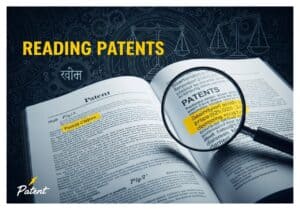Semplicemente la più grande directory di suggerimenti AI specializzata nella progettazione e nell'innovazione dei prodotti

Benvenuti nella più grande directory di istruzioni AI del mondo dedicata alla progettazione avanzata di prodotti, all'ingegneria, alla scienza, all'innovazione, alla qualità e alla produzione. Sebbene gli strumenti di intelligenza artificiale online stiano rapidamente trasformando il panorama ingegneristico aumentando le capacità umane, il loro vero potere è sbloccato attraverso istruzioni precise e sapientemente realizzate. Questo elenco completo offre una raccolta di istruzioni di questo tipo, che consentono di comandare sistemi di intelligenza artificiale in grado di elaborare grandi quantità di dati, identificare modelli complessi e generare soluzioni innovative in modo molto più efficiente rispetto ai metodi tradizionali.
Scoprite e mettete a punto i suggerimenti esatti necessari per sfruttare gli agenti AI online per ottimizzare i vostri progetti per ottenere prestazioni e producibilità massime, accelerare simulazioni complesse, prevedere con precisione le proprietà dei materiali e automatizzare una vasta gamma di attività analitiche critiche.
I filtri di ricerca avanzati consentono un accesso rapido a questa vasta directory e coprono l'intero spettro dell'ingegneria moderna.
Per motivi di tempo e di risorse del server, le richieste sono riservate ai soli membri registrati e non sono visibili in basso se non si è registrati. È possibile registrarsi, 100% gratuitamente:
È necessaria l'iscrizione
Per accedere a questo contenuto è necessario essere membri.
- Generazione di codice e debug
Prompt AI per Debug VHDL State Machine Code Snippet
- Progettazione per la produzione (DfM), Ottimizzazione del design, Analisi delle modalità e degli effetti dei guasti (FMEA), Metodo degli elementi finiti (FEM), FPGA, Garanzia di qualità, Controllo di qualità, Validazione, Verifica
This prompt analyzes a provided VHDL code snippet for a Finite State Machine (FSM) and a description of an observed incorrect behavior or error message. The AI should identify potential issues such as state transition errors output logic faults race conditions or syntax problems and suggest corrections. This aids in FPGA/ASIC development.
Uscita:
- Testo
- non richiede Internet in diretta
- Fields: {vhdl_code_snippet} {fsm_description_and_ports} {observed_problem_or_error_message} {target_fpga_family_optional}
- Best for: Identifying and suggesting fixes for common errors in VHDL FSM implementations helping engineers debug designs for FPGAs or ASICs more efficiently.
- Generazione o aumento dei dati
Prompt AI per Generate Synthetic ADC Noise CSV
- Gemello digitale, Apprendimento automatico, Garanzia di qualità, Controllo di qualità, Elaborazione del segnale, Simulazione, Metodi di prova
This prompt generates a CSV dataset of synthetic Analog-to-Digital Converter (ADC) output codes incorporating various noise types. Users specify ADC resolution signal level and characteristics of quantization noise thermal noise and 1/f noise. This is useful for testing digital signal processing algorithms.
Uscita:
- CSV
- non richiede Internet in diretta
- Fields: {adc_resolution_bits} {num_samples} {noise_parameters_json} {dc_signal_level_percent_fs}
- Best for: Creating realistic ADC output data with controlled noise characteristics for simulating and testing DSP algorithms filter performance or ADC modeling without needing hardware.
- Estrazione delle informazioni
Prompt AI per Extract Algorithm Details Research Paper
- Diagramma di controllo, Apprendimento automatico, Monitoraggio delle prestazioni, Miglioramento dei processi, Gestione della qualità, Ricerca e sviluppo, Elaborazione del segnale, Analisi statistica
This prompt analyzes the text of a research paper focusing on a specific signal processing or control algorithm. It extracts key details such as the algorithms steps mathematical formulation performance metrics reported and implementation notes. The output is a structured text summary.
Uscita:
- Testo
- non richiede Internet in diretta
- Fields: {research_paper_text} {algorithm_name} {sections_to_focus_on_list}
- Best for: Efficiently understanding the core aspects of a new or complex algorithm presented in a research paper without reading the entire document useful for feasibility studies or implementation planning.
- Risoluzione dei problemi e diagnostica
- Ingegneria elettrica
Prompt AI per Interpret SCADA Alarm Logs for Root Cause Analysis
- Ingegneria elettrica, Analisi delle modalità e degli effetti dei guasti (FMEA), Algoritmi di manutenzione predittiva, Miglioramento dei processi, Ottimizzazione del processo, Controllo di qualità, Gestione della qualità, Analisi della causa principale, Risposta alla domanda della rete intelligente
This prompt processes SCADA alarm log extracts to cluster alarms temporally and logically to infer root causes and suggest preventive maintenance actions for electrical grid equipment.
Uscita:
- Markdown
- non richiede Internet in diretta
- Fields: {scada_alarm_log_text}
- Best for: SCADA alarm pattern recognition and fault cause summarization
- Generazione o aumento dei dati
- Ingegneria elettrica
Prompt AI per Expand Power System Fault Cases Dataset
- Apprendimento automatico, Algoritmi di manutenzione predittiva, Miglioramento dei processi, Gestione della qualità, Energia rinnovabile, Analisi del rischio, Simulazione, Pratiche di sostenibilità
This prompt creates new, realistic fault case scenarios with varied parameters (fault type, location, duration) based on an existing power system faults dataset to assist in machine learning model training or stress testing.
Uscita:
- JSON
- non richiede Internet in diretta
- Fields: {power_faults_dataset_json} {number_of_new_cases}
- Best for: Augmenting fault datasets for power system simulations or ML training
- Generazione o aumento dei dati
- Ingegneria elettrica
Prompt AI per Generate Synthetic Sensor Noise Data
- Intelligenza artificiale (IA), Apprendimento automatico, Garanzia di qualità, Controllo di qualità, Sensori, Elaborazione del segnale, Simulazione, Analisi statistica
This prompt generates synthetic noise data matching the statistical characteristics (mean, variance, distribution type) of the input sensor noise dataset for augmenting sensor signal measurements in electronic experiments or simulations.
Uscita:
- CSV
- non richiede Internet in diretta
- Fields: {sensor_noise_data_csv} {desired_number_of_points}
- Best for: Creating synthetic noise data sets for sensor analysis
- Generazione o aumento dei dati
- Ingegneria meccanica
Prompt AI per Generate Synthetic Stress-Strain Curve Data
- Leghe, Metodo degli elementi finiti (FEM), Materiali, Industria meccanica, Proprietà meccaniche, Metallurgia, Sviluppo del prodotto, Simulazione, Corrosione da stress
This prompt generates synthetic stress-strain data points for a hypothetical metallic alloy based on key mechanical properties. It’s useful for creating illustrative datasets for FEM pre-processing or educational purposes when actual experimental data is unavailable. Output is in CSV format.
Uscita:
- CSV
- non richiede Internet in diretta
- Fields: {alloy_name} {ultimate_tensile_strength_mpa} {yield_strength_mpa} {elongation_at_break_percent}
- Best for: Creating plausible material behavior datasets for simulations or educational examples when specific experimental data is lacking.
- Estrazione delle informazioni
- Ingegneria meccanica
Prompt AI per Compile Standard Component Dimensions Table
- Progettazione per la produzione additiva (DfAM), Progettazione per la produzione (DfM), Elementi di fissaggio, Materiali, Industria meccanica, Progettazione del prodotto, Sviluppo del prodotto, Garanzia di qualità, Controllo di qualità
This prompt assists in extracting and tabulating standard dimensions for common mechanical components (e.g., bolts, bearings, pipes) from a provided text snippet of an engineering handbook or a relevant webpage URL. The goal is to get a structured table of these dimensions. The output is a Markdown table for easy readability.
Uscita:
- Markdown
- richiede una connessione Internet in tempo reale
- Fields: {handbook_section_text_or_URL} {component_name} {dimension_headers_list}
- Best for: Creating quick reference tables of standard component dimensions from reference materials, useful for design and drafting.
- Estrazione delle informazioni
- Ingegneria meccanica
Prompt AI per Extract Failure Modes from Research
- Corrosione, Progettazione per la produzione additiva (DfAM), Progettazione per la produzione (DfM), Analisi dei guasti, Analisi delle modalità e degli effetti dei guasti (FMEA), Manutenzione, Industria meccanica, Gestione della qualità, Analisi del rischio
This prompt is designed to scan research paper text or a publicly accessible research paper URL for mentions of specific failure modes in mechanical components or systems. It will list the identified failure modes and the context or causes attributed to them. This helps in quickly gathering intelligence on common or novel failure mechanisms.
Uscita:
- Markdown
- richiede una connessione Internet in tempo reale
- Fields: {research_source_text_or_URL} {component_type} {failure_keywords_list}
- Best for: Aggregating knowledge on failure mechanisms from technical literature to inform design, material selection, or maintenance strategies.

































Nessuno ha discusso i potenziali pregiudizi nella selezione dell'IA per queste directory? L'intelligenza artificiale non è immune da pregiudizi, gente.